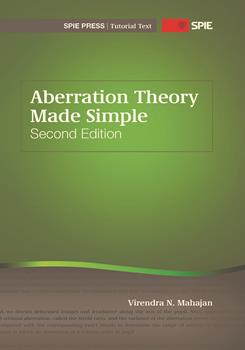|
So far, we have considered the aberrations of spherical surfaces, which are conic surfaces of zero eccentricity. In this chapter, we discuss the aberrations of a conic surface with an arbitrary value of eccentricity. Our starting point is imaging by and aberrations of a spherical surface discussed in Sections 1.8 and 4.2. It should be noted that the Gaussian imaging equations for a conic surface of a certain vertex radius of curvature are the same as those for a spherical surface of the same radius of curvature. Given the aberrations of a spherical surface, we determine the additional aberrations introduced by a corresponding conic surface. In particular, we show that if the aperture stop is located at the conic surface, the only additional aberration is spherical aberration. The other (primary) aberrations of the conic surface are identical to those of the spherical surface. The aberrations of a conic surface are further generalized to obtain the aberrations of a general aspherical (nonconic) surface. The aberrations of a paraboloidal mirror are briefly discussed and compared with those of a spherical mirror. Finally, we outline a procedure to determine the aberrations of a multimirror system. 6.2 CONIC SURFACE A conic surface of eccentricity e and vertex radius of curvature R is described by its sag according to (6-1) where, as illustrated in Figure 6-1, (xc, yc, zc) are the coordinates of a point on it and (6-2) is the distance of the point from the z axis. The origin of the coordinate system is at the vertex of the conic, and the z axis is along its axis of rotational symmetry. |
|
|


